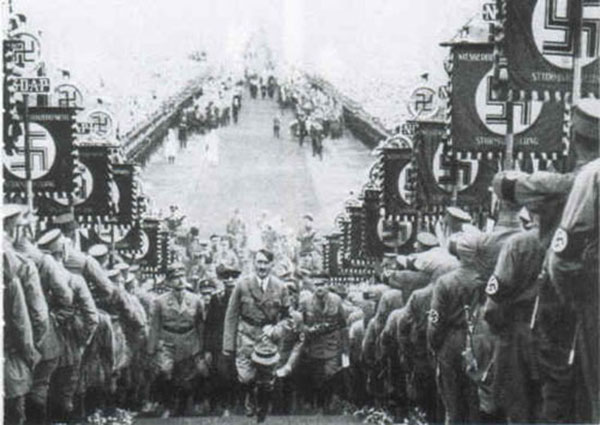Fascist movements sprang up throughout Europe in the 1930s and were strong in not only Germany, Italy and Spain, but in both Allied and Axis nations.
It is widely understood that Italy was the first fascist nation and that Mussolini founded the movement before taking control of the government, as well as that Hitler was impressed by the movement and thus founded his own fascist organization that eventually took over Germany. Not as widely known is the fact that fascism was beginning to be a trend in several European countries during the same time period.
Some may know that fascism formed in Spain prior to World War II, started by Fransisco Franco and led to a civil war in which Germany and Italy offered military supplies to the cause and that the United States had offered similar assistance (and volunteer troops) to defend the Spanish Republic. Even the Soviet Union offered aid to the Republic.
Fascism in Other European Nations
Fascists movements were strong in not only Germany, Italy and Spain, but in Britain, the Netherlands, Norway, France, Hungary, Romania, Argentina, Brazil and Lebanon. Of these nations only Spain, Hungary, Romania and Argentina had fascist movements so strong that it took over those governments in the 1930s. Spain’s Falange (1939-1975), Hungary’s Arrow Cross led by Ferenc Szalasi (October 1944-April ’45) and Romania’s Iron Guard led by Ion Antonescu (1940-44) were just as ruthless as the Italian Fascists. In fact, Hungary and Romania’s fascist governments aligned with Germany and Italy during World War II.
Fascism After World War II
The fascism that rose up in the 1920s and ’30s was as a response to the political and economic situation in Italy and Germany following the First World War. Fascist regimes still survived long after that, particularly with Spain’s Falange until 1975. Argentina’s military junta (council) under Juan Peron led the country with nationalistic dictatorship much like Spain from 1930 to 1958. Brazil’s Integralistas was under Plinio Salgado (1932-1938) used many Fascist ideas, including a centralized and authoritarian government and a corporatist economy, the stiff-armed salutes and nationalism. The Integralistas never seized control of Brazil. Lebanon’s Phalange from 1936 to 1987 was a very powerful political force that, like the Integralistas, never seized control of Lebanon. Iraq’s Ba’ath Party from 1968 to its defeat under Saddam Hussein in 2003, was much more totalitarian like Germany with secret police, no civil rights, torture and repression.
The Legacy of Fascism
Like these countries, fascsim was a response to political and economic situations of the 20th century. Its nationalism attracted people in a country that felt they’ve been oppressed and resented it. It revolutionary conservatism was an aggressive protest against social change and the reduction of traditional values and societies. Fascists claimed they had succeeded where democracies failed with the combination of mass appeal with strong government. Ideologically, fascism used both futuristic technology and traditional customs. Most of all fascism gave its countrymen a set of values such as national pride, and the respect and glory of its leader that had lost confidence by the people.
Sources:
- Findley, Carter Vaughn Findley. Rothney, John Alexander. Twentieth Century World, Second Edition. 1990. Pages 144-147.
- “The Arrow Cross”.
- Ba’ath Party: Saddam Hussein
- Field Enterprises. World Book Encyclopedia. 1985. [Argentina]. Page 625. [Romania]. Pages 400-401.





